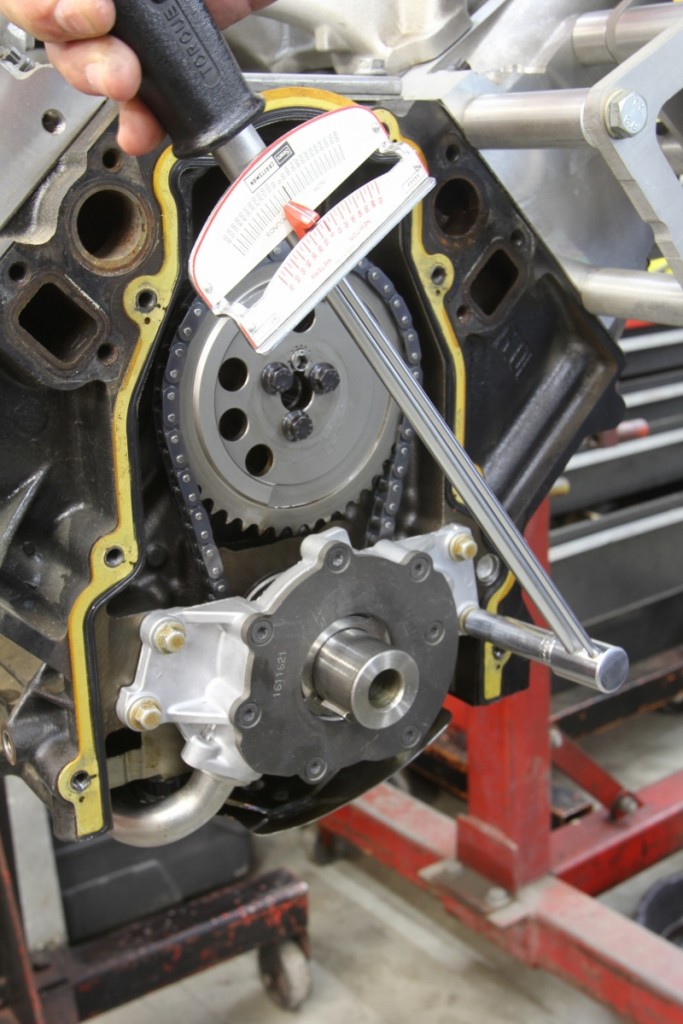Words Jeff Smith/Photos Melling Performance and Jeff Smith
The popularity of the GM LS small-block continues to escalate, as it offers an incredible array of options for making power. With this comes the availability of wide variety of parts for this engine. For this story, we’re going to take a look at some important options and tech tips for the all-important lubrication system. While oil pumps and pickups may not be as romantic as cylinder heads and camshafts, the engine still needs a well-designed oiling system to live a long and powerful life.
Perhaps the most dramatic LS engine architecture change was away from the traditional Gen I small-block Chevy oil pump. All small- and big-block Chevys employed a simple spur gear pump driven off the camshaft. The LS not only moved the pump off the cam and onto the crankshaft snout, but also improved its efficiency by using a gerotor style that is quite efficient.
But with these changes also comes some compromises. Much like carefully positioning the oil pump pickup location on a small-block, the LS has some idiosyncrasies that define its use. We’ll cover several of them to help you make the right decision when it comes time to build your next LS engine.
Let’s start with selecting the right pump for your application. There is a wealth of urban myths about oil volume and the “must-have” oil pressure for even mild performance engines. These misunderstandings stem from hot rodding’s classic “more is better” theory. With oil pumps, more pressure is not necessarily better. Pumps create pressure when there is a restriction to flow. A simple example is with electric fuel pumps. These pumps are often rated at different pressures. With a given size pump, as pressure increases, the volume the pump can produce decreases, and the pump must work harder to produce that pressure.
OE engineers calculate the total volume of oil necessary to lubricate a given engine at maximum load and then size the pump accordingly. The pump is generally oversized to accomplish this task, using a pressure relief valve and spring to regulate the pressure. When pump volume begins to stack up in the lubrication circuit, this restriction creates pressure. When the pump reaches this maximum desired pressure set by the relief spring, the spring compresses, opening the valve, which then bypasses a given amount of oil to maintain the maximum pressure. If the pump is too large, it merely internally bypasses more oil than necessary, which is inefficient.
By design, at idle, the pump will be spinning slower — but its volume is still more than sufficient. This is why the pressure is lower. Despite this lower pressure, there still is sufficient oil volume to feed the bearings and energize the hydraulic roller lifters. Given this situation, excessive idle oil pressure is of minimal benefit. Idle pressures of 30 to 35 psi, or even as low as 20 psi, offer no cause for concern. Conversely, attempting to create 50 psi at idle with the engine at normal operating temperature is unnecessary.
Conversely, stock LS oil pumps do tend to lose efficiency at engine speeds exceeding 6,200 to 6,500 rpm. This can be traced to several different factors, most of which contribute to pump cavitation. This can be easily remedied with a Melling performance pump. For example, the Melling PN 10295 is a standard volume performance pump that offers 10 percent more pressure using a red pressure relief spring. The next step up is a Melling PN 10296 pump that offers this same higher pressure potential matched with an 18-percent increase in volume.
These pumps offer several advantages over a stock replacement pump that you might want to consider. The 10295 and 10296 are both CNC machined and hard anodized for additional wear resistance. Both pumps come with a CNC-machined and phosphate coating on the pump cover and use countersunk screws in the cover for improved timing cover clearance. This is helpful if you are using a dual-row timing set that requires the pump be spaced 0.125 inch forward to clear the timing set.
Higher volume pumps have found a place in some LS engines, especially high mileage aluminum block engines that suffer from excessive lifter bore clearance. GM originally produced these engines with slightly wider lifter bore clearances to allow these engines to start and run in extreme cold climates. This slightly increased lifter bore clearance creates a significant internal hydraulic leak that effectively increases the pump volume of oil. Often it is much easier to add a slightly higher volume pump than to refurbish the lifter bores with aftermarket bushings.
An important point is that the later Gen IV LS engines employing GM’s Active Fuel Management (AFM, also known as displacement on demand or DOD) requires a significant increase in flow and pressure to push additional oil through the hydraulic activation circuits. For these engines, Melling offers an oil pump that puts out 33 percent more volume than the Melling 10295. This pump is designed for use in AFM and VVT engines and not recommended for use in Gen III or Gen IV LS engines.
While the LS engine architecture offers multiple advantages over the old Gen I small-block, it also has its assembly technique peculiarities. One aspect that can cause serious performance issues is the seemingly insignificant O-ring seal placed around the oil pump inlet tube as it fits inside the oil pump.
There is quite a bit of confusion surrounding this simple little seal since there are two different seals that can be used. Melling has created an easy-to-follow guide that references the correct O-ring seal to be used with the three different pickup tubes. The point to remember is the different O-rings are necessary because of various tube designs, not because of changes to the oil pumps. We’ve also created a chart that follows the Melling information.
The reason this seal is so important is that with the oil pump at the front of the engine and the sump at the rear, this necessitates a 22-inch long tube from the pickup to the pump. Pumps do a much better job of making pressure than at pulling enough vacuum to “pull” the oil from the sump to the tank. If the seal is cut or does not make a complete seal, air is introduced into the inlet side of the pump and pump performance suffers dramatically.
Once the correct seal is in place and the engine is assembled, the oil pump and oil filter need to be pre-filled to help the engine make immediate oil pressure when it starts. This is important anytime the oil pump has been replaced or if the engine is new. Melling offers a quick two-minute video that explains how this works. You can find the video on Melling.com under Tech Videos, but we’ll also show you how to do it.
There is a large, 8mm Allen plug in the front of the engine on the driver side that, when removed, has direct access to the oil pump. Use a 2- to 3-foot length of 3/8-inch rubber fuel hose and shove the hose about 1 inch into the hole. Then place a funnel on the other end of the hose and pour roughly a half-pint of oil into the hose. This will pre-fill the oil pump cavity. This is a great time to also pre-fill the oil filter. This ensures the pump will make pressure almost immediately after the engine fires.
The classic line is that armchair generals study tactics, while real generals study logistics. The same could be said about the dreamers who would rather talk about romantic parts like intakes, heads, and cams, while real engine builders study the details like oil pumps and lubrication systems. That’s because you won’t get very far with a high-rpm street engine with an under-performing oiling system.
Oil Pump Pickup Seal
| LS Oil Pickup
Style |
GM Seal
Color |
Melling Seal
Color |
| Grooved | Red | Green |
| Tapered | Red | Green |
| Straight | Blue | Black |


















